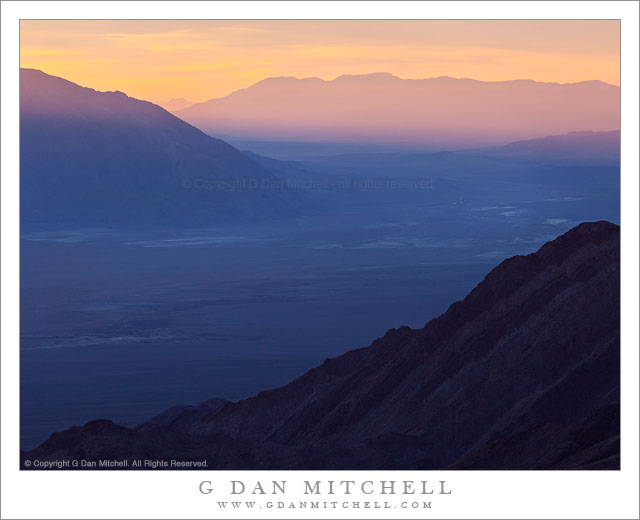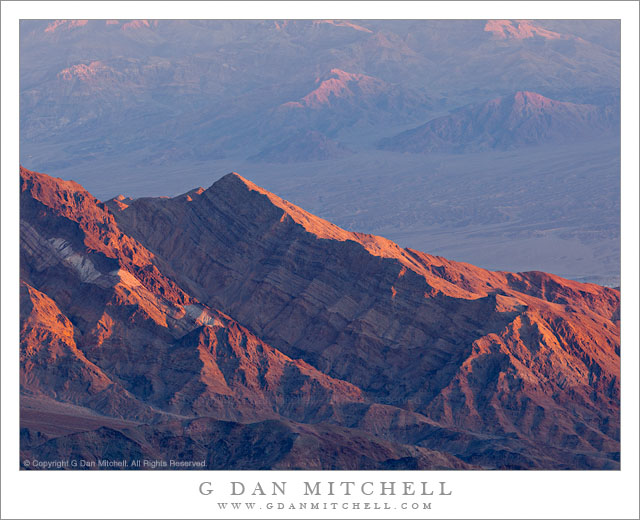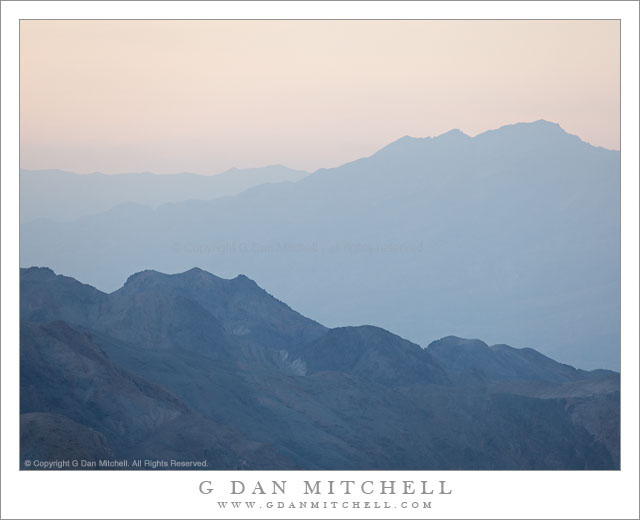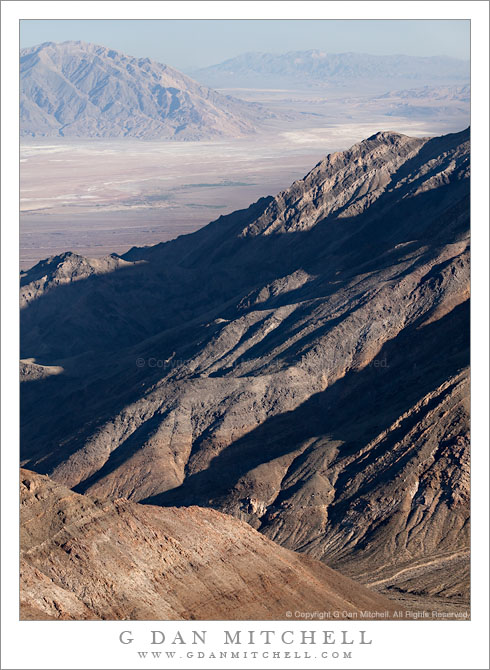First Light, Southern Death Valley. Death Valley National Park, California. January 5, 2012. © Copyright 2012 G Dan Mitchell – all rights reserved.
As seen from Aguereberry Point, first dawn light spills across the lower end of Death Valley.
I have previously photographed from this location high in the Panamint Range and overlooking a vast portion of Death Valley National Park and its surroundings. The view stretches east to 11,000+’ peaks in Nevada and west to the crest of the Sierra Nevada, and great distances north and south to places and features that I cannot identify. My previous visits had all been late in the day, and I had often wondered what the location might be like at the start of the day. So, on this visit to Death Valley, a trip to Aguereberry Point before dawn was on my agenda.
As usual, I awoke well before dawn at my camp site back at Stovepipe Wells. (You can often tell if there are other photographers about – in the dark period an hour or more before sunrise you hear people quietly get up, quickly start their engines, and drive away.) I headed up into the Panamints and turned off at the start of the six-mile gravel road that goes to this point, and arrived just before the first colorful light began to light up the sky – and I was pleased to see that there were some interesting clouds. I have been fascinated by this view over the shoulder of a ridge dropping down toward the Valley above Trail Canyon, so I composed a photograph that juxtaposed this diagonal with the end of the Black Mountains across the valley and the light-filled atmosphere beyond where the very first sun was coming across lower Death Valley.
G Dan Mitchell is a California photographer whose subjects include the Pacific coast, redwood forests, central California oak/grasslands, the Sierra Nevada, California deserts, urban landscapes, night photography, and more.
Blog | About | Flickr | Twitter | Facebook | Google+ | 500px.com | LinkedIn | Email
Text, photographs, and other media are © Copyright G Dan Mitchell (or others when indicated) and are not in the public domain and may not be used on websites, blogs, or in other media without advance permission from G Dan Mitchell.




